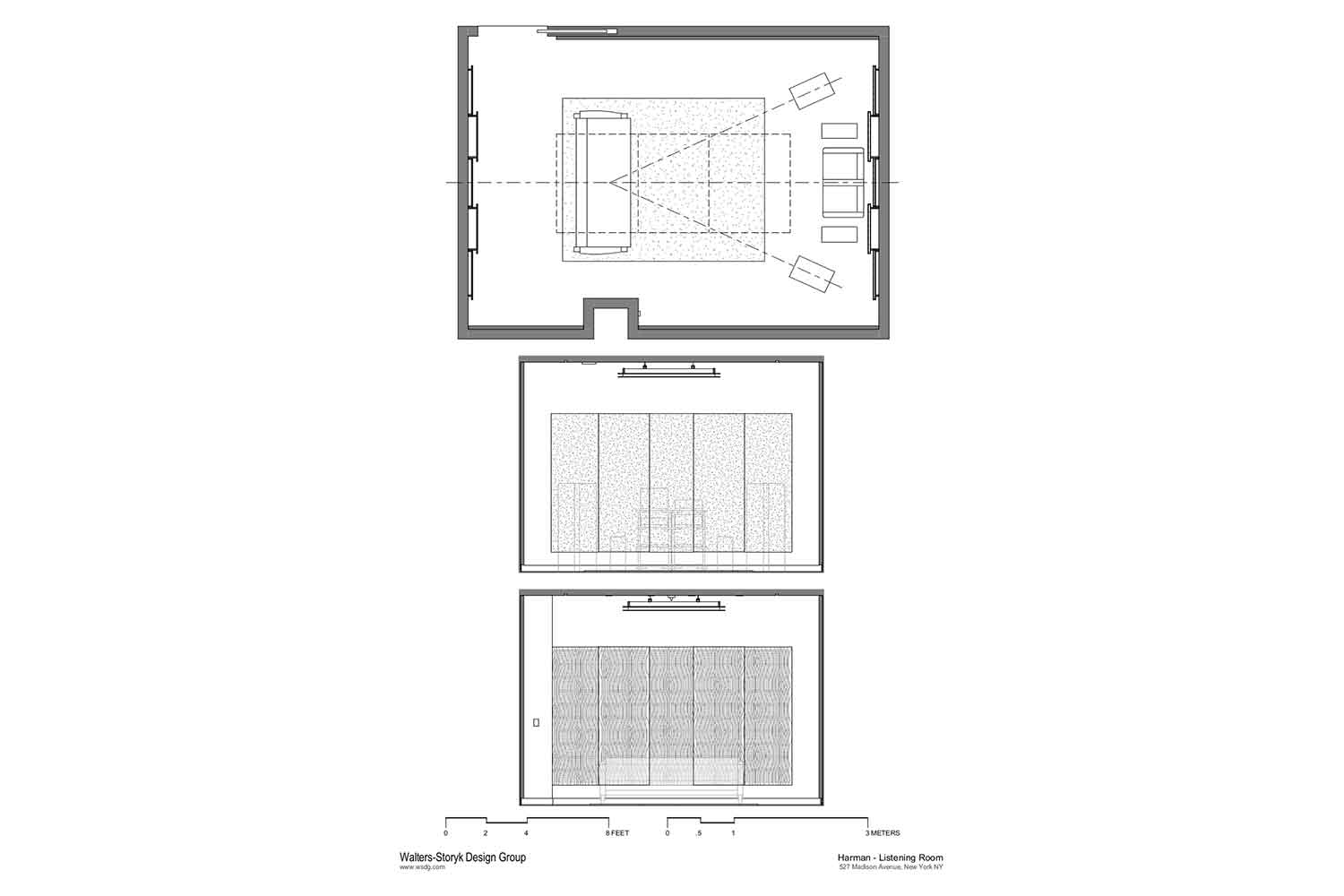German tenor Jonas Kaufmann at France 2 TV
Teatro Colón
Teatro Colón
No, Harman does not include an architectural acoustics firm among its audio, electronics, and services subsidiaries. I wonder if it's possible that it was originally intended to resemble typical consumer room sizes (like along the lines of 18-24' long, 10-14' wide, 8-9' tall) but constructed with isolation from neighboring spaces in mind. WSDG does have "name brand" cachet, and their work seemed to be limited in this case to surface treatments (last graphic https://wsdg.com/projects-items/harman-flagship-store-listening-room/#), so absorption on the front and side walls, tuned absorption on the rear wall (https://www.realacoustixllc.com/harman). Harman's International Reference Room (http://seanolive.blogspot.com/2009/05/harman-international-reference.html) seemed to measure well across the frequency spectrum, though the Powerpoint slides are no longer available, so good performance had been attained in the past. However, I would surmise that the cosmetic appearance of the IRR, much less the MLL, would not be acceptable for much of the intended audience for Mark Levinson amplifiers.Don't they have full time, in-house staff who should be experts?
Is it really that narrow, in your opinion? Or are you looking at the photos, likely taken with a lens that wider than "real"?why do mainstream audiophiles always narrow down the stereo triangle? I guess to make the sweet spot bigger? but it destroys stereo

Is it really that narrow, in your opinion? Or are you looking at the photos, likely taken with a lens that wider than "real"?

Ah, I meant that I was questioning whether the angle was so narrow so that it "destroys stereo," which seems like a bit of an overstatement. Also, the couch/sofa could be moved for individual preference for anyone using the room. Anyway, not much more to say.the drawing meassures 24.5 degrees in Gimp.
doesn't seam much, but in terms of stereo image, if you don't hit 30, you better overshoot then undershoot
Even Harman repeats the snake oil BS. "“We know how Mark Levinson preamps, amplifiers and CD/ASCD players are supposed to sound". There not supposed to "sound" like anything.
Hochgraf: "There is growing consensus among acousticians that although many of these parameters are useful, they do not provide a complete representation of concert hall acoustics...the limitations are largely attributable to differences between an omnidirectional sound source and an orchestra and between omnidirectional microphones and the human hearing system." She then compared some average measurements from Boston Symphony Hall (RTocc 1,9, C80 -2.6) and Philharmonie Paris (RTocc 2.5, C80 -0.7 so higher Rt and also higher clarity score compared with Symphony Hall).There have been preference studies that run a bit contrary to what this article claims. You have two conflicting parameters. Clarity and reverberation time. The ideal reverberation time is between 1.8-2.2 seconds. The greater the clarity the better. But clarity generally starts to decline well before the reverberation gets up to the ideal. So one can argue that the best acoustics will belong to the halls that fall into the reverberation times of 1.8-2.2 seconds with the highest clarity.
